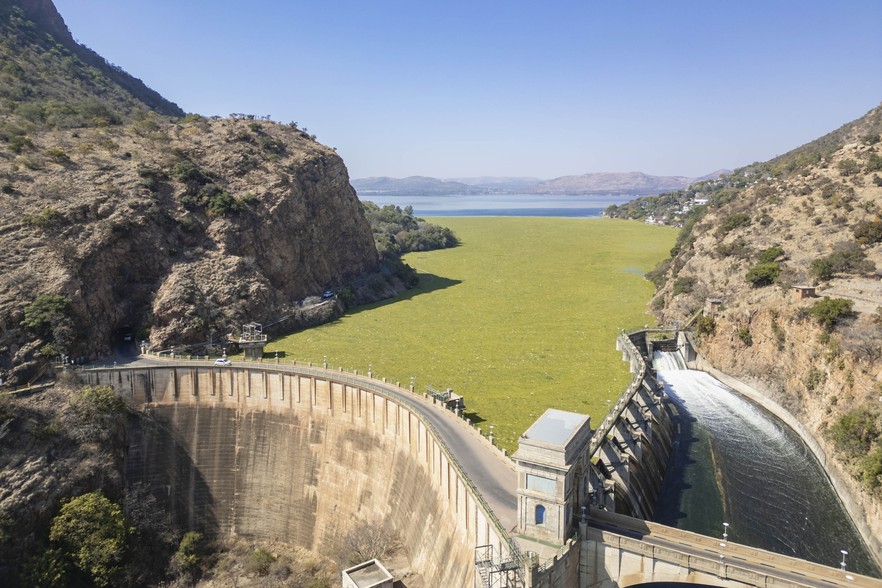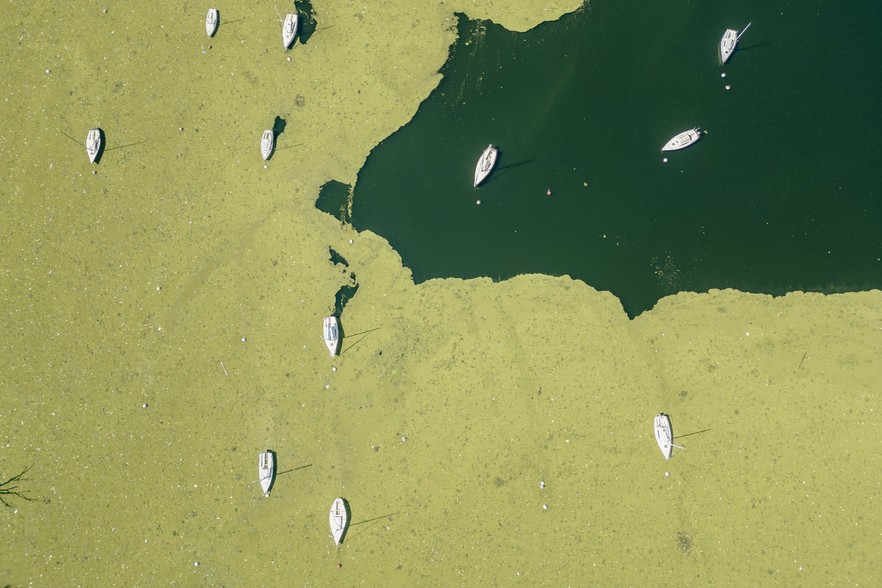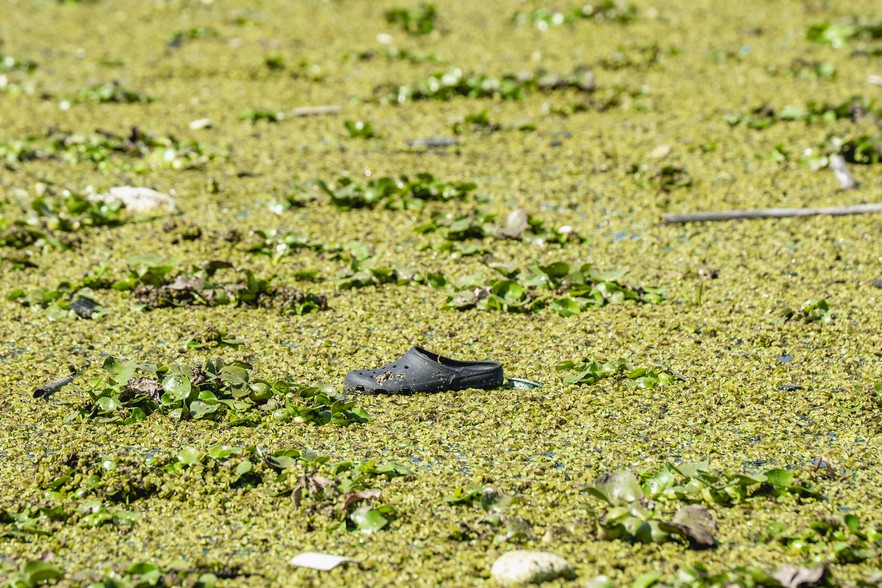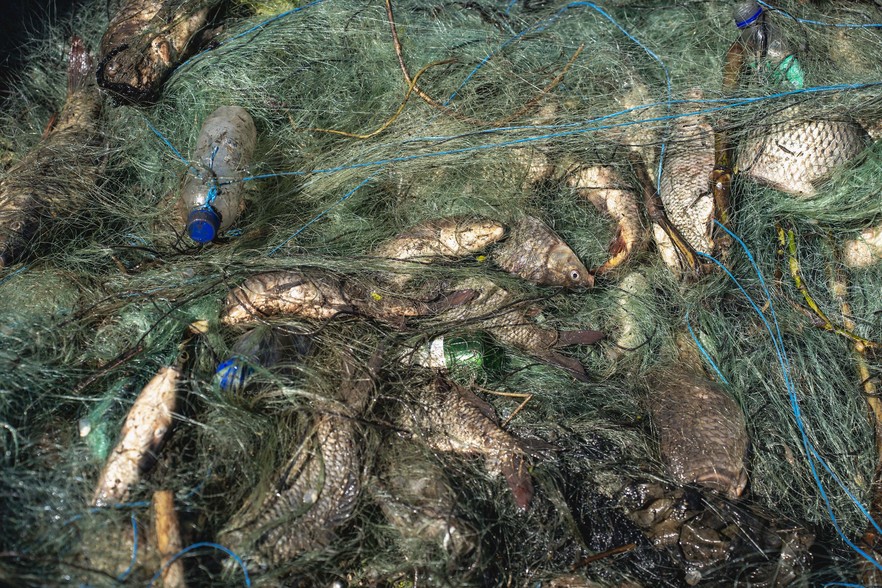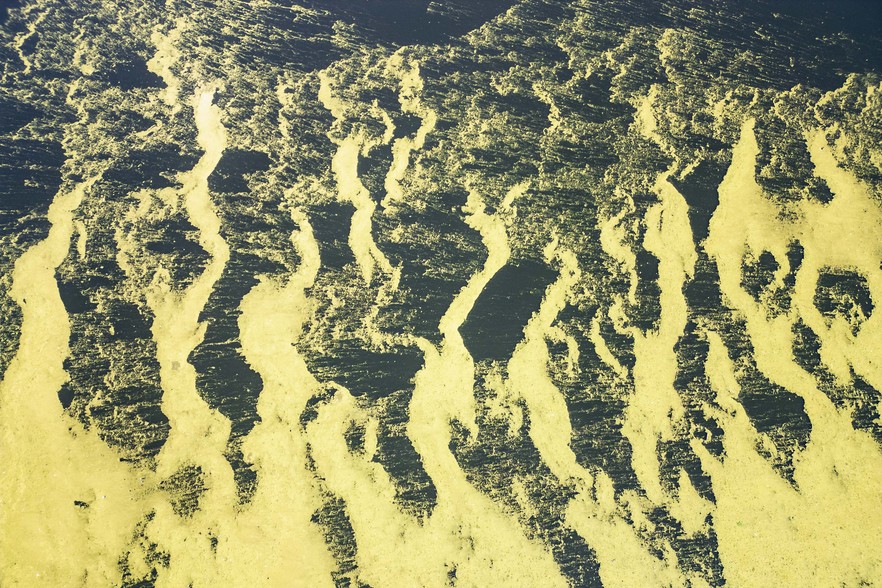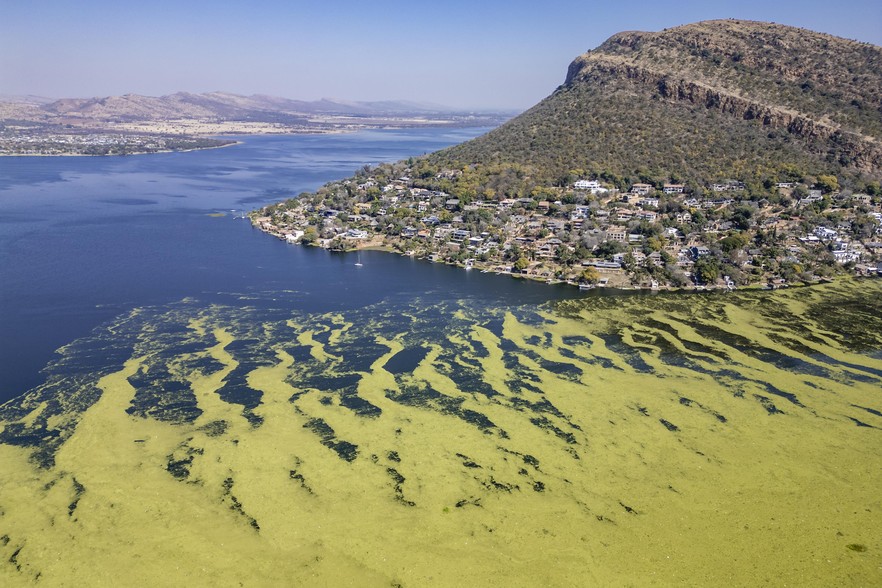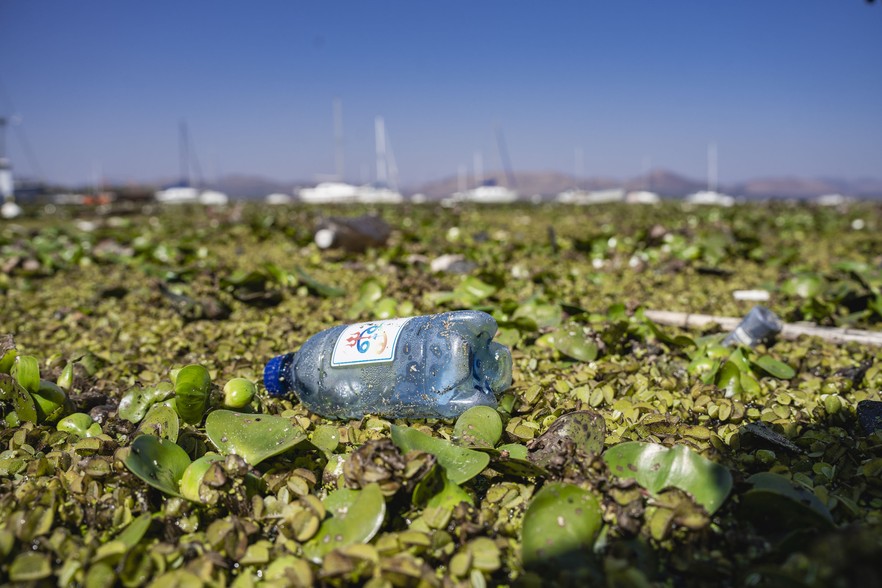Municipalities are ruining Hartbeespoort Dam
Pollution and sewage are harming the aquatic environment
A green carpet of Salvinia minima, a free-floating, rootless aquatic fern native to South America covers an area near the Hartbeespoort Dam wall in North West province. Photos: Ihsaan Haffejee
Hartbeespoort Dam in North West province is becoming increasingly polluted. High levels of nutrients, including nitrogen and phosphorus, contribute to the growth of invasive plant species and deprive the water of oxygen, harming aquatic life.
On a recent visit, GroundUp found large sections of the dam covered in Salvinia minima, a free-floating, rootless aquatic fern native to South America that thrives in nutrient polluted water. Plastic bottles, polystyrene and even shoes could be seen caught in the floating vegetation.
Residents in the area and businesses that rely on local tourism have expressed concern about the poor water quality of the dam.
Boats sit on a carpet of invasive green vegetation.
John Wesson from the Wildlife Society of South Africa (WESSA) says rivers that feed into the dam, like the Jukskei and Crocodile, are heavily polluted by municipalities, industry and farmers dumping waste.
“Often we find with municipalities that their sewage treatment plants are not functioning, their manholes get blocked or their pumps and cables get stolen, and all that raw sewage gets dumped into the river that flows into the dam,” said Wesson.
WESSA conducts monthly independent water tests. Readings from their July tests show extremely high levels of ammonia and phosphates, far above the standard minimum acceptable levels.
“We don’t even test for E. coli because we know that the E. coli levels in the dam are going to be through the roof,” said Wesson.
A shoe floating on top of the invasive species in the Hartbeespoort Dam.
“It is unfortunate that the crisis that we are facing is predominantly caused by municipalities,” Sello Seitlholo, water and sanitation deputy minister, said earlier this year on a visit to the dam.
He called on Madibeng Local Municipality to address the inadequately treated effluent being released at its water treatment plant into the Hartbeespoort catchment area.
An oversight inspection conducted by Seitlholo at Zandspruit wastewater pump station in March revealed that the plant malfunctions, and this results in over 30-million litres of sewage spilling daily into the Jukskei River and ending up in Hartbeespoort Dam.
Seitlholo named runoff from agriculture and chemicals from industry as other sources of pollution. He said the department was advocating for the polluter-must-pay principle. “So that everyone knows of the repercussions of polluting our water bodies”, said Seitlholo.
Fish found with litter and trash in this illegal fishing net confiscated by authorities.
The department appointed Magalies Water to develop a three-year remedial programme for Hartbeespoort Dam to combat long-standing poor water quality and invasive species.
David Magae, Magalies Water spokesperson, said the company systematically tests water in the dam and in many upstream locations. He said that analysis of the data collected over the past two years confirms that the dam has high nutrient concentrations as well as “significant levels of chlorophyll and algal proliferation”. These findings, he said, show that there is “persistent contamination from upstream activities, which remains the foremost challenge to water quality management in the area”.
Salvinia minima viewed from above as it blows across the Hartbeespoort dam.
Winds blows the carpet of Salvinia minima across the Hartbeespoort dam.
A plastic bottle caught amongst the invasive species at the Hartbeespoort Dam.
Support independent journalism
Donate using Payfast

Don't miss out on the latest news
We respect your privacy, and promise we won't spam you.
Letters
Dear Editor
There are solutions to these problems listed in the article regarding the sewerage spillages etc and we have approached the relevant authorities but were told that the money that would be chanelled to fix this would just end up in the wrong hands and be used for the wrong reasons. We have stopped trying to help and this problem will not go away unless approached in the correct manner. Yes it will cost money and time but the problems will go away and you will have a clean dam once again.
Dear Editor
The water quality of the dam is nothing less than pathetic and shocking. The safe water sports have become pretty dangerous with clusters of floating rubbish amongst the hyacinth or silvinia. It looks like the feeding rivers are used to dump municipal rubbish in. Not to mention the sewerage that pushes the phosphate levels up and killing the oxygen levels.
One often wonders what you see on the surface is maybe only the tip of the iceberg to what has sunk to the bottom of the dam. For activities on the dam, you need to fight through the leftover strings of hyacinth or the long stretches of illegal gill nets or just plastic junk that entangles your boat propeller. Or even worse, hitting that secret log hiding just under the surface.
Then lastly, you need to entertain the unlimited supply of floating packets of condoms the kids use to make water bombs.
With the dam in such a beautiful surrounding, it is a pity to have it so polluted.
© 2025 GroundUp. This article is licensed under a Creative Commons Attribution-NoDerivatives 4.0 International License.
You may republish this article, so long as you credit the authors and GroundUp, and do not change the text. Please include a link back to the original article.
We put an invisible pixel in the article so that we can count traffic to republishers. All analytics tools are solely on our servers. We do not give our logs to any third party. Logs are deleted after two weeks. We do not use any IP address identifying information except to count regional traffic. We are solely interested in counting hits, not tracking users. If you republish, please do not delete the invisible pixel.

